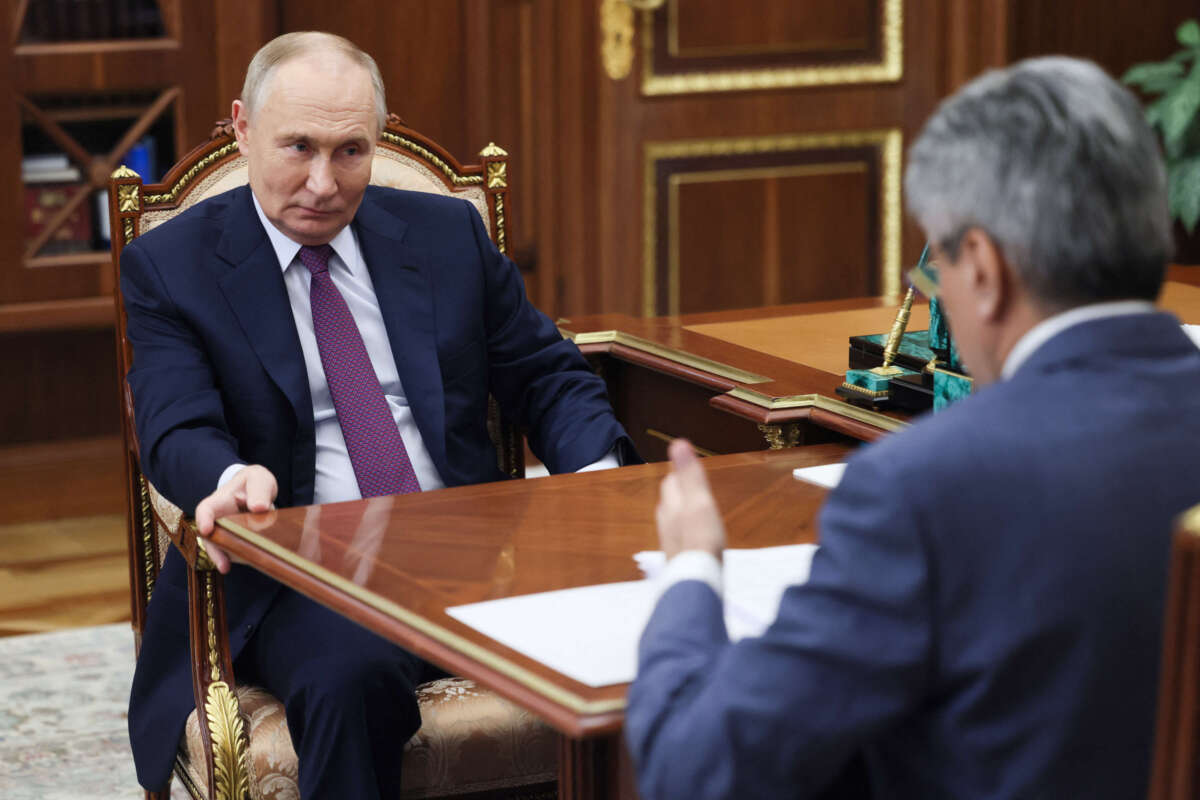Fresh fears of escalation were expressed Tuesday after Ukraine struck territory deep inside of Russia using long-range missiles for the first time within hours of the Kremlin announcing changes to its nuclear weapons posture.
In the pre-dawn hours, Ukraine reportedly used U.S.-supplied ATACMS missiles to attack an ammunition depot in the Bryansk region of Russia, located less than 200 miles north of a small strip of Russian territory currently held by Ukraine thanks to an incursion mounted in summer 2024. Russian forces are working to push back Ukrainian forces in the area.
The Russian Defense Ministry confirmed that there was an attack. “At 3:25 a.m. this morning the enemy struck a site on the territory of the Bryansk Region with six ballistic missiles. According to confirmed data, US-made ATACMS tactical missiles were used. As a result of an anti-missile battle, five missiles were shot down and one was damaged by crews of S-400 and Pantsir missile defense systems,” the ministry said in statement, according to the Russian government-run news agency TASS.
Russian Foreign Minister Sergey Lavrov said that Russia would respond “accordingly.”
The attack comes on the 1,000th day of Russia’s full-scale invasion of Ukraine that began in 2022, and mere days after President Joe Biden green lit Ukraine’s use of these specific weapons — in what The New York Times characterized as a “major shift of American foreign policy” and one foreign policy expert called a “needlessly escalatory step.”
Ukraine President Vlodomyr Zelenskyy has long sought permission from the U.S. government to use Army Tactical Missile Systems, or ATACMS, according to the Financial Times. Zelenskyy has also asked for the lifting of restrictions on other long-range weapons provided by NATO countries — including Storm Shadow missiles from the United Kingdom. The U.S. began supplying the Lockheed Martin-produced ATACMS earlier this year, according to Defense One, but imposed restrictions on their use due to the escalatory implications of Ukraine using them to strike targets far inside Russian territory.
Also on Tuesday, Russian President Vladimir Putin signed a decree implementing changes to the country’s nuclear doctrine that lower the threshold for potential nuclear weapons use.
Under the updated doctrine, “aggression against the Russian Federation and (or) its allies by any nonnuclear state with the participation or support of a nuclear state is considered as their joint attack,” according to the The New York Times.
“The big picture is that Russia is lowering the threshold for a nuclear strike in response to a possible conventional attack,” Alexander Graef, a senior researcher at the Institute for Peace Research and Security Policy at the University of Hamburg, told Reuters.
“Russia’s new nuclear doctrine means NATO missiles fired against our country could be deemed an attack by the bloc on Russia. Russia could retaliate with WMD against Kiev and key NATO facilities, wherever they’re located. That means World War III,” wrote former Russian President Dmitry Medvedev on X early Tuesday.
U.S. intelligence analysts have also concluded that granting Ukraine the ability to use U.S., French and U.K.-supplied long-range missiles could prompt forceful retaliation by Russia, but that the move would likely not fundamentally alter the course of the war.
Mark Episkopos, a Eurasia research fellow at the Quincy Institute for Responsible Statecraft, warned Monday that use of such weapons by the Ukraine military would likely not impact the battlefield advantages of either side in the immediate term but puts “Russia and NATO one step closer to a direct confrontation.”
“With such weapons now in play,” added Episkopos, “the window to avert catastrophic miscalculation is now that much narrower.”
Meanwhile, in a Tuesday statement on X, the International Campaign to Abolish Nuclear Weapons (ICAN), said it was “dangerously complacent” for Western politicians and pundits to dismiss Putin’s shift as some kind of bluff.
“We can’t know if Putin — or any leader of a nuclear-armed country — will use nuclear weapons at any time,” argued ICAN. “No matter the size of a nuclear weapon any use would escalate rapidly into a nuclear war devastating the world. The stakes are simply too high to assume Putin is bluffing.”
ICAN, the 2017 winner of the Nobel Peace Prize, said that the “way to prevent nuclear weapons from ever being used again is to eliminate them, and treaties like the Treaty on the Prohibition of Nuclear Weapons are here for that.”
The Biden administration’s rollback of restrictions comes after thousands of North Korean troops have joined the Russian military effort, and as President-elect Donald Trump’s January inauguration approaches. Trump has said he will seek a swift end to the war and criticized the amount of aid the United States has provided Ukraine.
Angry, shocked, overwhelmed? Take action: Support independent media.
We’ve borne witness to a chaotic first few months in Trump’s presidency.
Over the last months, each executive order has delivered shock and bewilderment — a core part of a strategy to make the right-wing turn feel inevitable and overwhelming. But, as organizer Sandra Avalos implored us to remember in Truthout last November, “Together, we are more powerful than Trump.”
Indeed, the Trump administration is pushing through executive orders, but — as we’ve reported at Truthout — many are in legal limbo and face court challenges from unions and civil rights groups. Efforts to quash anti-racist teaching and DEI programs are stalled by education faculty, staff, and students refusing to comply. And communities across the country are coming together to raise the alarm on ICE raids, inform neighbors of their civil rights, and protect each other in moving shows of solidarity.
It will be a long fight ahead. And as nonprofit movement media, Truthout plans to be there documenting and uplifting resistance.
As we undertake this life-sustaining work, we appeal for your support. Our fundraiser ends at midnight tonight! We still need 163 new monthly donors to hit our goal. Please, if you find value in what we do, join our community of sustainers by making a monthly or one-time gift.
